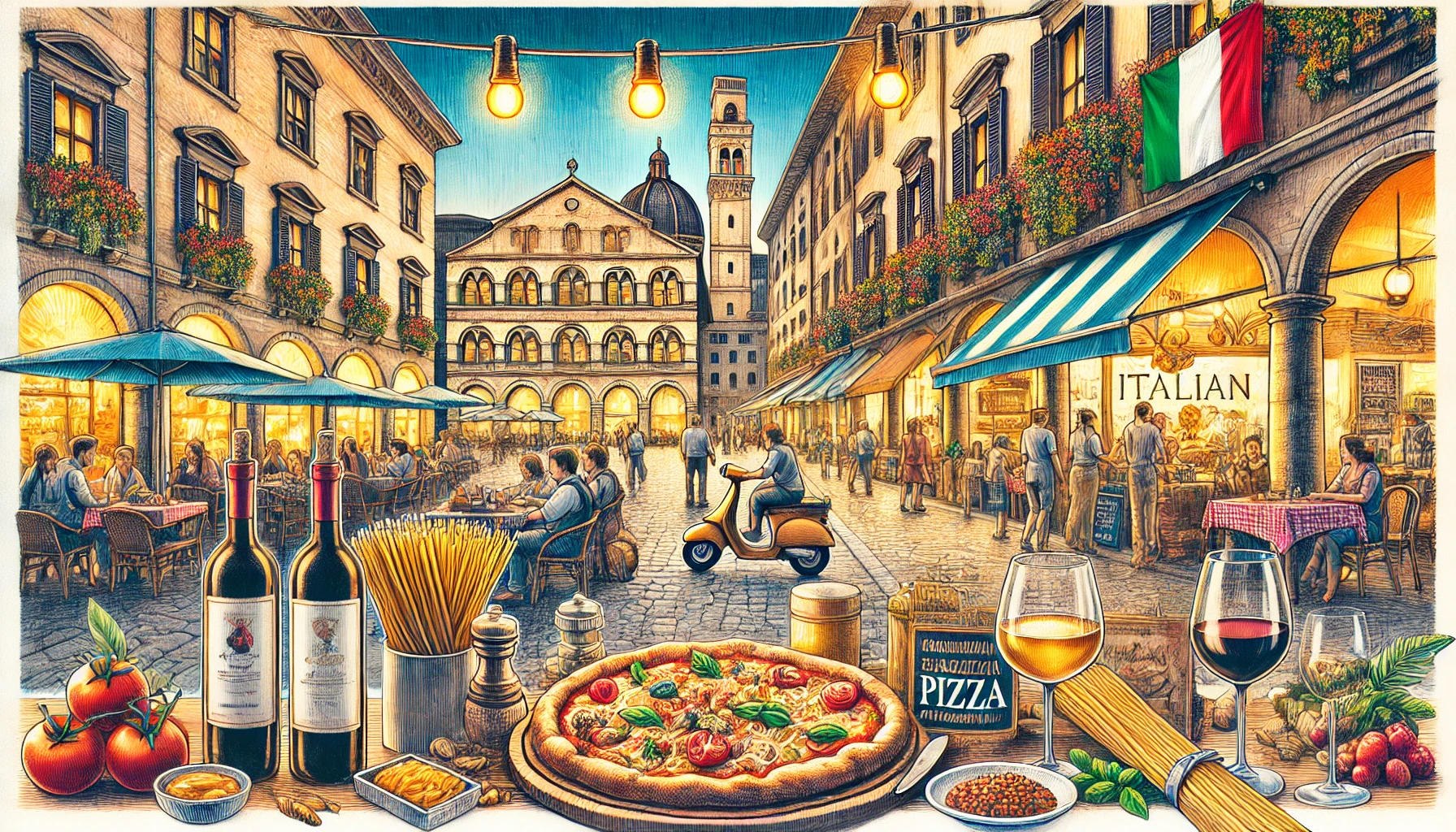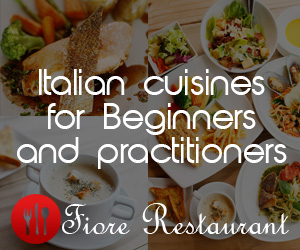Italian food is much more than a feast for the senses; it’s a living story of tradition, family, and artistry. For centuries, gastronomy in Italy has been a reflection of its cultural identity—an edible archive of its history, values, and regional diversity. From the fragrant olive groves of Tuscany to the bustling trattorias of Rome, every dish tells a tale of the people and places that shaped it.
Yet, for many enthusiasts of Italian cuisine, understanding the true essence of these dishes often proves elusive. Why does the taste of authentic pizza in Naples feel unmatched elsewhere? What cultural significance lies behind dishes like risotto alla Milanese or cannoli? And how can one move beyond the surface to appreciate the deeper connection between gastronomy and culture in Italy?
This post dives into these questions, offering an insightful journey through the culinary and cultural heart of Italy. By exploring the historical foundations, regional intricacies, and global impact of Italian food, you’ll gain a richer understanding of how gastronomy in Italy goes far beyond ingredients on a plate. Along the way, we’ll discover the challenges facing traditional cuisine in a modern world and offer ways to experience this rich heritage yourself. If you love food, enjoy exploring cultures, or just want to appreciate Italian cuisine more, this journey will bring you closer to the heart of Italy’s food traditions.
The Historical Foundations of Italian Gastronomy
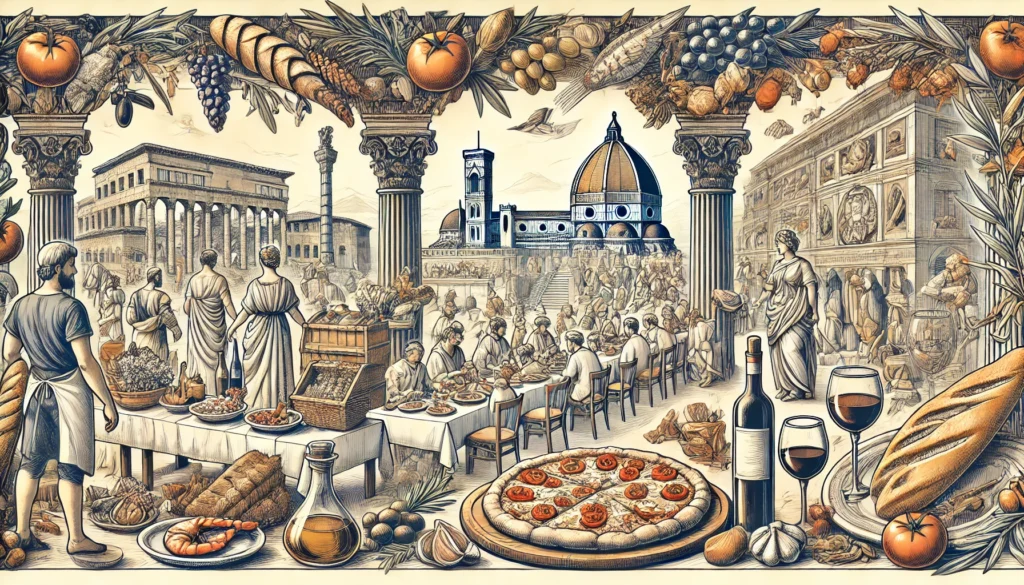
Italian gastronomy is deeply rooted in history, making it a fascinating reflection of the country’s cultural evolution. From ancient Roman feasts to Renaissance-era culinary sophistication, each period contributed unique flavours and techniques to what we know today as traditional Italian cuisine. Exploring these roots allows us to appreciate how Italy’s culinary heritage has shaped the global food scene.
For example, the Romans introduced their love for bread, wine, and olive oil, elements that still define Italian meals. Medieval trade routes brought spices like cinnamon and saffron, which elevated dishes to new heights. By the Renaissance, cooking became an art form, with feasts showcasing intricate recipes and impeccable presentation. This history is the reason Italians still focus on using quality ingredients and traditional techniques.
The roots of Italian gastronomy run deep, shaped by centuries of history and cultural exchange:
- Ancient Rome: Bread, wine, and olive oil formed the foundation of meals, staples still central to Italian cuisine today.
- Middle Ages: Trade routes introduced spices, rice, and sugar, enriching the culinary landscape and leading to iconic dishes like risotto and panettone (history of Italian cuisine).
- Renaissance: A golden era of gastronomy, marked by elaborate feasts and the creation of sophisticated recipes like tortellini and zuppa inglese (Renaissance gastronomy).
By exploring historical recipes and ingredients, modern cooks can reconnect with the cultural heritage embedded in every dish.
Regional Cuisines: A Culinary Tapestry
The diversity of Italian cuisine mirrors the country’s varied landscapes and cultural influences. Each region brings its unique ingredients, techniques, and traditions to the table, creating a mosaic of flavours. From the rich, creamy dishes of the North to the vibrant, tomato-based recipes of the South, Italy’s regional cuisines offer an endless journey of discovery for food enthusiasts.
Italy’s regional cuisines form a vibrant mosaic, each reflecting unique geography, climate, and history:
- Northern Italy: Creamy risottos and rich polentas, influenced by dairy and rice. Emilia-Romagna offers Parmigiano Reggiano and balsamic vinegar.
- Central Italy: Bold, olive oil-rich dishes from Tuscany, and Roman classics like cacio e pepe.
- Southern Italy: Tomatoes, eggplants, and fresh seafood, featured in Sicilian caponata and Neapolitan pizza.
- Islands: Sicily and Sardinia incorporate Arab, Spanish, and Greek influences with dishes like arancini and fregola.
Quick Tip: For food lovers, an immersive journey through these regions is an unmissable experience—start with a visit to Tuscany’s olive farms or Emilia-Romagna’s Parmesan factories.
Food and Cultural Identity in Italian Society
In Italy, food is more than nourishment; it is a language of connection and expression. Shared meals serve as the foundation of family life and social gatherings, highlighting the importance of togetherness. The deep cultural ties between food and identity in Italy are evident in everything from traditional Sunday lunches to the nation’s pride in its culinary heritage.
In Italy, food is more than sustenance; it’s the cornerstone of cultural identity and social connection:
- Sacred Rituals: Meals like Sunday lunches bring families together with multiple courses: antipasti, pasta, a main dish, and tiramisu.
- Storytelling Through Food: Iconic dishes like spaghetti aglio e olio showcase how simplicity and quality can create culinary masterpieces.
The saying “A tavola non si invecchia” (At the table, one does not grow old) reflects the timeless joy of Italian dining (cultural food traditions).
Celebrations and Gastronomy: Food as a Festive Symbol
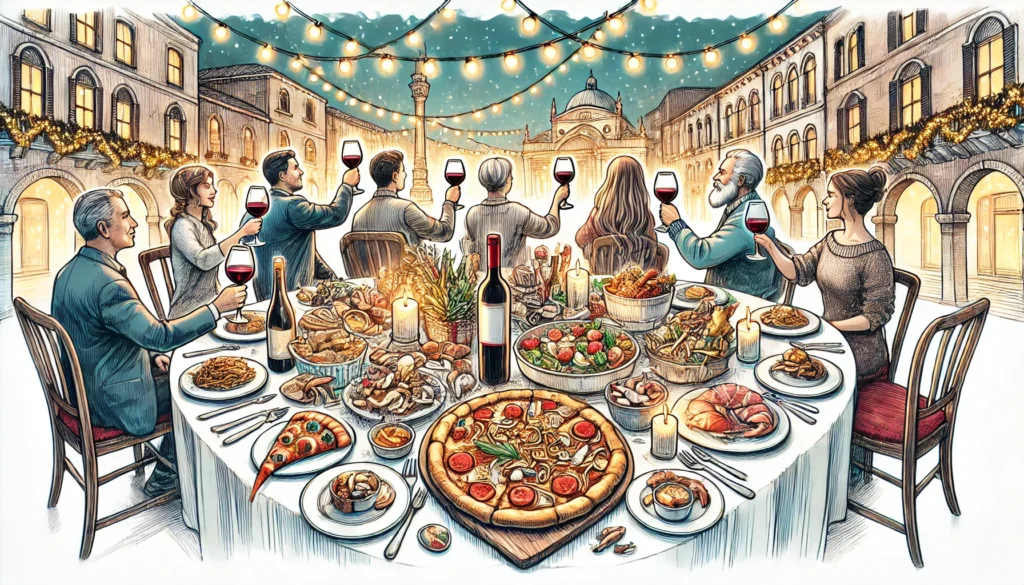
Festivals and celebrations in Italy are incomplete without their rich culinary traditions. Each holiday or regional event is marked by iconic dishes that carry symbolic meanings, blending gastronomy with rituals. These foods connect generations, bringing people together to celebrate life’s moments with flavours that transcend time.
Italian celebrations are synonymous with food, where each dish holds a special meaning:
- Christmas: Panettone and torrone dominate holiday tables.
- Easter: Symbolic dishes like lamb and colomba pasquale highlight renewal.
- Regional Festivals: Venice’s frittole (fried pastries) and Siena’s panforte add local flair.
Pro Tip: Attend a Sagra festival to experience authentic Italian dishes in a communal setting—a perfect way to celebrate gastronomy and culture.
The Global Reach of Italian Gastronomy
Italian cuisine is celebrated worldwide, not only for its flavours but also for its simplicity and adaptability. As immigrants carried their culinary traditions abroad, dishes like pizza and pasta became global favourites. Today, Italian gastronomy continues to inspire fusion dishes while remaining rooted in its authentic heritage, making it a universal symbol of comfort and joy.
Italian cuisine has transcended borders to become a global favourite:
- Immigrants brought pizza and pasta to the world, adapting them to local tastes. Italian-American classics like spaghetti and meatballs showcase this creativity.
- Fusion cuisine continues to evolve with examples like matcha tiramisu or sushi-style arancini.
Did You Know? Italy leads in sustainable gastronomy initiatives, with organisations like Slow Food protecting regional practices (sustainable Italian cuisine).
Culinary Tourism: Experiencing Culture Through Food
Italy’s culinary traditions attract travellers seeking more than just sightseeing. Culinary tourism invites visitors to immerse themselves in the nation’s food culture through hands-on experiences like pasta-making, wine tasting, and exploring vibrant local markets. These activities provide a deeper connection to Italy’s regions and their unique gastronomic offerings.
For a deeper connection to Italian culture, immerse yourself in culinary tourism:
- Take a pasta-making class in Bologna.
- Tour Tuscany’s vineyards for Chianti wine.
- Explore Palermo’s bustling food markets.
Helpful Tip: Agritourism—staying on a family-run farm—provides fresh, farm-to-table experiences and a hands-on appreciation of Italian gastronomy.
Sustainability and the Future of Italian Cuisine
As global challenges grow, Italy’s culinary community is finding innovative ways to preserve its heritage. Sustainability has become a cornerstone of Italian gastronomy, with movements like Slow Food promoting responsible practices. By focusing on organic farming, zero-waste cooking, and climate adaptation, Italy ensures its rich culinary traditions remain vibrant for future generations.
Italy’s commitment to sustainability is rooted in its agricultural traditions. Farms across the country are adopting climate-smart techniques to safeguard crops like San Marzano tomatoes and Chianti grapes. Restaurants are reducing waste by crafting dishes from whole ingredients, including stems and peels. Meanwhile, Slow Food’s initiatives aim to protect regional specialities and promote biodiversity, ensuring Italy’s culinary legacy remains resilient in the face of modern challenges.
Italy is embracing sustainability to preserve its culinary heritage:
- Slow Food Movement: Promotes local, seasonal, and organic ingredients while protecting traditional products like Parmigiano Reggiano.
- Climate Challenges: In 2023, extreme weather caused a 3.9% drop in agricultural output (climate impact on Italian farming).
- Zero-Waste Practices: Italian chefs are embracing plant-based menus and waste minimisation to adapt.
Unexplored Aspects of Italian Gastronomy
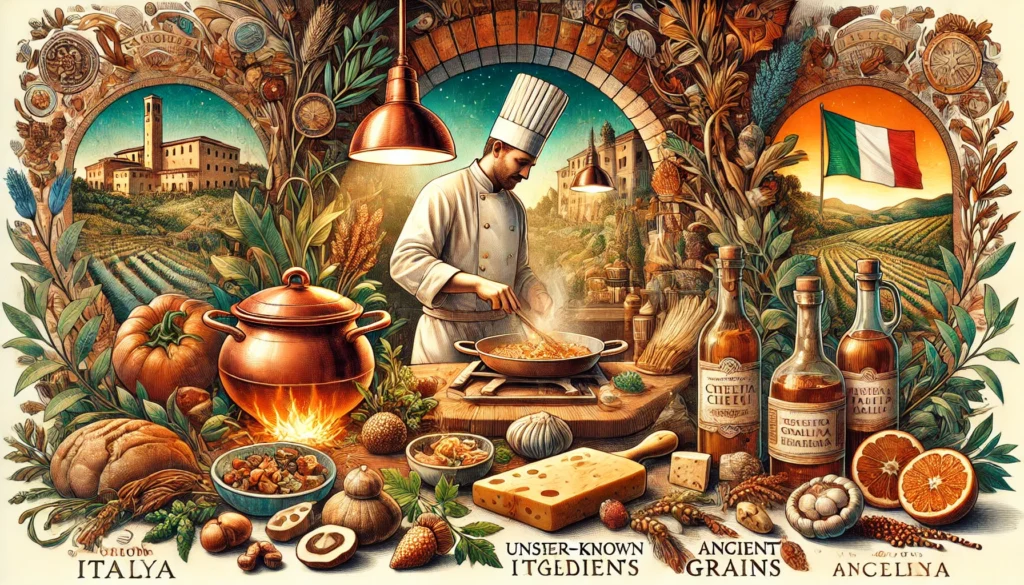
Beyond the well-known dishes, Italian cuisine holds countless secrets waiting to be uncovered. From ancient recipes to regional superstitions, there are layers of culinary history that remain underexplored. By delving into these lesser-known aspects, one can gain a richer understanding of Italy’s diverse gastronomic legacy.
Italian gastronomy has hidden gems waiting to be discovered:
- Ancient Recipes: Dishes like garum (fermented fish sauce) and acquacotta (peasant soup) are being revived.
- Superstitions: Foods like lentils are eaten on New Year’s Day to symbolise prosperity.
- Rare Ingredients: Wild herbs and mirto berries from Sardinia showcase Italy’s untamed beauty.
Pro Tip: Explore these lesser-known traditions for a deeper appreciation of Italy’s culinary heritage.
A Journey Worth Savouring
Italy’s gastronomy is a testament to its rich history, regional diversity, and enduring traditions. From ancient staples to innovative creations, Italian food bridges the past and present, inviting us to savour its stories.
Italian gastronomy also offers a lens into the soul of the nation. Each dish reflects the pride Italians have in their history, geography, and shared traditions. By tasting Italy, you experience not just food but the stories, emotions, and values that define a culture.
Whether enjoying a simple plate of pasta al pomodoro or exploring regional delicacies, Italian cuisine invites you to celebrate the beauty of life through food. Let it inspire you to cook, travel, and connect with others—just as Italians have done for generations.
Buon appetito!
Your Next Step: Try authentic recipes, explore local festivals, or plan a culinary tour of Italy’s regions. Every bite deepens your connection to Italy’s remarkable heritage.
